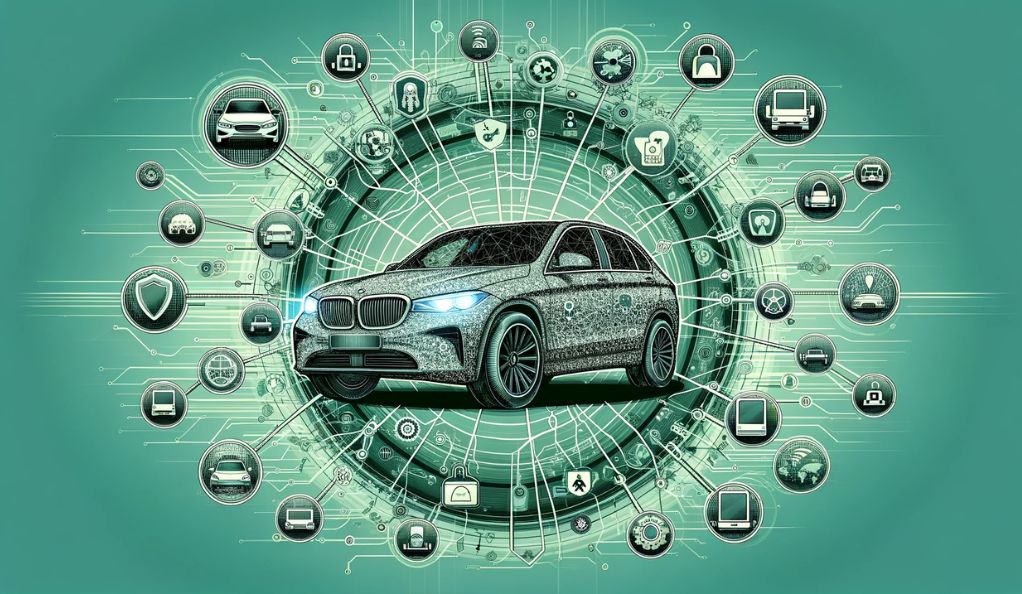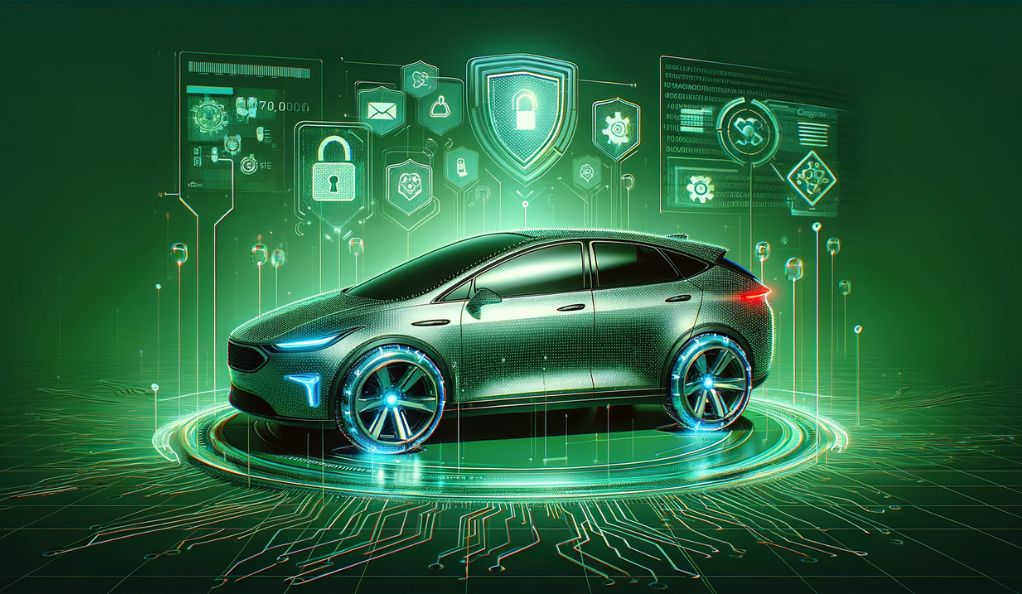Introduction to the Connected Car Ecosystem
The emergence of connected cars has revolutionized the automotive industry, blending cutting-edge technology with everyday transportation. At the heart of this revolution is the integration of mobile and Internet of Things (IoT) technologies, transforming cars into sophisticated, interconnected machines. These advancements, while offering unprecedented convenience and functionality, also introduce a multitude of security challenges that must be meticulously addressed.
Understanding Connected Cars
A connected car is no longer just a means of transportation; it’s a complex network of systems and sensors that interact with the external environment and internal mechanisms. This intricate ecosystem relies heavily on IoT solutions, combining cloud and embedded technologies to enable a series of internet-connected devices. These technologies facilitate a wide range of features, from navigation and infotainment systems to autonomous driving capabilities and vehicle-to-everything (V2X) communication.
The Role of IoT and Mobile Technology
The core of connected cars lies in their ability to communicate – with the internet, other vehicles, and various infrastructures. This is achieved through IoT and mobile technologies, which include various sensors, control units, and communication modules. Automotive Electronic Control Units (ECUs) serve as the vehicle’s brain, regulating and monitoring its various functions. Advanced Driver Assistance Systems (ADAS) enhance vehicle safety by alerting the driver to potential hazards and improving vehicle control. Meanwhile, V2X communications open a channel for vehicles to interact with their surroundings, including other vehicles (V2V), infrastructure (V2I), and even pedestrians (V2P).
Key Components in Connected Car Ecosystem
- Automotive ECUs: These are crucial for managing engine functions, safety features, and in-car entertainment systems.
- ADAS: Systems like automatic emergency braking, lane departure warning, and adaptive cruise control fall under this category.
- V2X Communications: Enabling real-time data exchange between vehicles and their environment, crucial for safety and efficient traffic management.
Major Security Risks for Connected Cars

The interconnected nature of connected cars, while offering numerous benefits, also opens up a range of security vulnerabilities. It’s crucial to understand these risks to implement effective protective measures.
Theft of Personal Data
Connected cars collect and store vast amounts of personal data, from location and trip details to entertainment preferences and potentially even financial information. This data, if not properly secured, is a prime target for cybercriminals. The risk intensifies with the increasing number of sensors and data points in modern vehicles.
Vehicle Theft
The shift from traditional physical keys to digital keys and wireless key fobs introduces new vulnerabilities. Cybercriminals can potentially gain unauthorized access to vehicles by intercepting communication between these digital keys and the car. This digital hijacking can occur even remotely, without needing physical access to the vehicle.
Connection Risks
Vehicles today connect to various networks via cellular, Wi-Fi, and physical interfaces. Any flaw in these connections can be exploited by hackers. Ensuring the security of these connection points is paramount to protect against unauthorized access and data breaches.
Manipulation of Safety-Critical Systems
Hackers could potentially take control of critical vehicle functions such as steering, braking, or acceleration. Such breaches can have dire consequences, posing significant safety risks to passengers and other road users.
Mobile Application Vulnerabilities
As car manufacturers develop mobile applications for remote vehicle management, these apps become potential targets. Security flaws in these applications can allow hackers to remotely access and control vehicle functions, leading to privacy breaches and even physical control of the car.
Lack of ‘Designed-In’ Security
Many connected cars do not have security integrated into their design. This oversight can lead to vulnerabilities in both software and hardware components, making them susceptible to cyberattacks.
Supply Chain Vulnerabilities
The automotive industry relies on a complex supply chain for its components. Without stringent cybersecurity measures across this supply chain, there’s a risk of introducing security vulnerabilities into the vehicle systems.
Keeping up with Security Patches and Updates
Connected cars, like any other technology, require regular updates to address new threats. The challenge lies in ensuring these updates are applied in a timely and secure manner.
Key Management Issues
Effective management of cryptographic keys is crucial for secure communication. However, some manufacturers still rely on manual processes, which can be less secure and more prone to errors.
Infotainment System Vulnerabilities
Modern cars feature advanced infotainment systems that process sensitive data and are interconnected with other vehicle systems. Security flaws in these systems can lead to data breaches and provide a gateway for more severe attacks.
Each of these risks presents a unique challenge in the realm of connected car security. Addressing them requires a multifaceted approach, combining technological solutions, regulatory compliance, and continuous vigilance.
Defensive Technologies and Solutions for Connected Car Security
To counter the varied security risks associated with connected cars, several defensive technologies and solutions have been developed. These technologies are essential in safeguarding the vehicles against cyber threats.
Vulnerability Scanners
Automated tools known as vulnerability scanners play a critical role in identifying potential security weaknesses. These tools scan endpoints, servers, networks, and applications, seeking out any exploitable security vulnerabilities. Regular scanning ensures timely detection and remediation of security gaps.
Extended Detection and Response (EDR)

EDR systems are pivotal in providing a comprehensive security stance. They collect and analyze data from multiple points within the vehicle’s network, including the car itself, its network connections, and backend servers. This enables consistent and effective detection and response to potential threats.
Firewalls
Firewalls serve as a fundamental line of defense in network security. They monitor and control incoming and outgoing network traffic based on predetermined security rules. This helps in preventing unauthorized access to the vehicle’s network and mitigates the risk of data breaches.
Application Security
Securing the applications within the vehicle, especially those that interact with external networks, is crucial. Application security involves protecting the car’s software from data theft, code vulnerabilities, and other forms of cyberattacks, ensuring the integrity and confidentiality of the software applications.
Third-Party App Review
With the integration of third-party applications in connected car ecosystems, stringent control over these apps is necessary. Reviewing, testing, and verifying third-party apps before they are integrated can significantly reduce the risk of introducing new vulnerabilities.
Implementing Secure Communication Protocols
Secure communication protocols, such as Transport Layer Security (TLS) and Secure Sockets Layer (SSL), are essential in encrypting data transmitted between the vehicle and cloud services. This ensures the confidentiality and integrity of the data being exchanged.
Continuous Software Updates and Patch Management
Regularly updating the vehicle’s software and promptly applying security patches are vital in protecting against newly discovered vulnerabilities. This requires a reliable and secure mechanism for delivering and installing updates.
Robust Key Management
Effective management of cryptographic keys is critical for secure communication within the vehicle’s network. Automated and secure key management systems ensure that cryptographic keys are handled securely throughout their lifecycle.
Adherence to Standards and Regulations
Compliance with established standards and regulations like UNECE WP.29, ISO 24089, and ISO/SAE 21434 is important for ensuring baseline security requirements are met. These standards provide guidelines for designing and manufacturing secure connected cars.
By implementing these defensive technologies and adhering to best practices, the automotive industry can significantly enhance the security of connected cars. This not only protects the vehicle and its occupants but also maintains consumer trust and industry reputation.
Standards and Regulations for Connected Car Security
As connected car technology evolves, the implementation of standards and regulations becomes imperative to ensure consistent and robust security across the automotive industry.
Global Standards for Automotive Security
- UNECE WP.29 Regulation: This standard, established by the United Nations Economic Commission for Europe, focuses on enhancing vehicle safety and environmental performance. For connected cars, WP.29 includes specific guidelines on cybersecurity and software updates, ensuring that vehicles are protected against cyberattacks and are capable of receiving software improvements over their lifespan.
- ISO/SAE 21434: This standard is a collaborative effort between the International Standardization Organization (ISO) and the Society of Automotive Engineers (SAE). It provides a framework for cybersecurity engineering in road vehicles, detailing the processes necessary to ensure cyber resilience and security throughout the entire vehicle lifecycle.
- ISO 24089: Focused on Software Update Engineering, this standard outlines the best practices for managing and executing software updates in vehicles. It is critical for maintaining the security and functionality of connected cars by ensuring that they can effectively respond to emerging cyber threats.
Regional and National Regulations
While global standards provide a foundational framework, regional and national regulations also play a crucial role in shaping the security landscape of connected cars:
- United States: As of now, there is no comprehensive federal legislation specifically governing the cybersecurity of connected cars. However, some states, like Massachusetts, have introduced bills aimed at regulating the security of IoT devices, including connected vehicles.
- European Union: The EU has been proactive in implementing regulations that address the cybersecurity of connected vehicles. These include the General Data Protection Regulation (GDPR), which impacts how personal data collected by vehicles is handled, and various directives focusing on network and information security.
The Role of Industry in Shaping Standards
Automotive manufacturers and technology providers are instrumental in developing and adhering to these standards. By actively participating in the creation and refinement of security standards, they ensure that the guidelines are practical, effective, and keep pace with technological advancements.
The Need for Continuous Evolution
Cybersecurity standards and regulations are not static; they need to evolve continuously to counter new and emerging threats. The automotive industry, along with regulatory bodies, must remain vigilant and adaptive, regularly updating standards to reflect the changing landscape of cyber threats and technological advancements.
Conclusion
The integration of IoT and mobile technology in connected cars brings a new frontier in automotive innovation, coupled with critical cybersecurity challenges. Addressing these requires a unified approach, combining advanced technology, adherence to global standards, and collaborative efforts across the industry.
Manufacturers play a key role, integrating robust security measures from design to deployment, while adhering to international standards like UNECE WP.29 and ISO/SAE 21434. Concurrently, consumers must stay informed and practice safe digital habits to protect their vehicles.
Ultimately, ensuring the security of connected cars is a collective journey, demanding continuous vigilance and adaptation to emerging threats and technologies. Through a shared commitment to cybersecurity, we can secure a safe and efficient future for connected vehicles.








